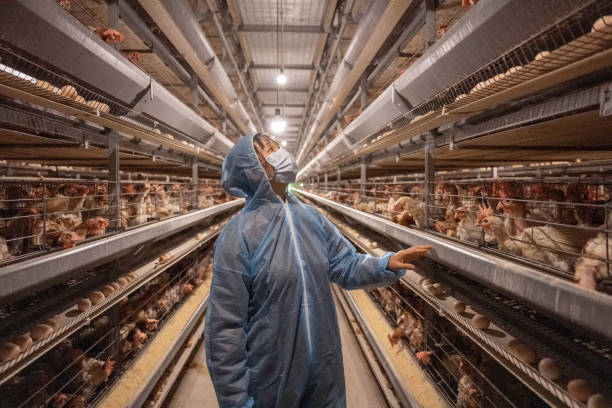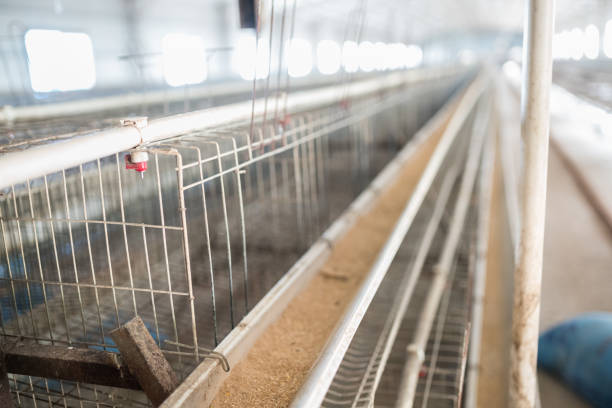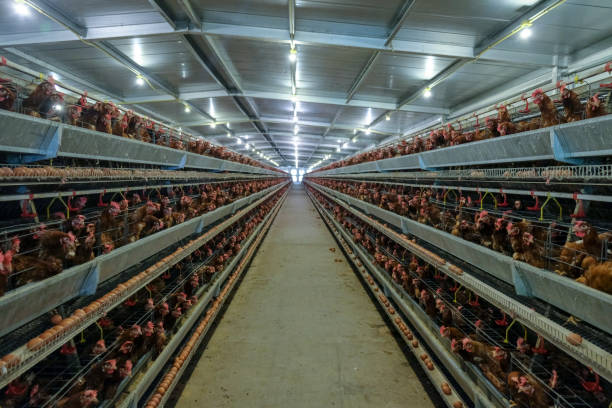Battery Chicken Cage for Medium Poultry Farms in Uganda
Battery Chicken Cage for Medium Poultry Farms in Uganda
Running a medium-sized poultry farm in Uganda? You’re likely facing challenges around space, labor efficiency, and egg production consistency. One solution that’s rapidly gaining traction across East Africa — especially among forward-thinking farmers — is the adoption of battery chicken cages. These modern housing systems are transforming traditional poultry farming by bringing automation, hygiene, and better bird management into play. For Ugandan farms looking to scale sustainably, investing in a quality battery chicken cage system isn’t just an upgrade — it’s a smart business move.
If you’ve been relying on deep litter or free-range methods, switching to battery cages might seem like a big leap. But consider this: more control over feeding, easier disease prevention, higher egg collection rates, and significantly reduced feed waste. That adds up fast, especially when you’re managing 2,000 to 10,000 birds. At Livi Mechanical, we’ve worked with dozens of Ugandan farmers who made the switch and saw their productivity rise by as much as 40% within the first year.
What Makes Battery Cages Ideal for Medium-Scale Farms?
When we say “medium-scale,” we’re talking about operations that aim beyond subsistence — farms where consistency, daily output, and market reliability matter. In such setups, every square meter counts, and so does every worker’s time. Traditional housing systems often lead to overcrowding, higher mortality, and inconsistent egg yields. Battery cages solve these issues through smart design.
A standard battery cage setup includes stacked layers of individual compartments, each housing multiple hens. They come with automatic feeding troughs, nipple drinking lines, and slatted floors that allow droppings to fall through — keeping the birds clean and reducing ammonia buildup. This not only improves hen health but also cuts down on manual cleaning dramatically. For Ugandan climates, which can get humid and warm, proper ventilation and waste removal are critical to preventing respiratory diseases and parasites.
Another major advantage is feed efficiency. On average, caged hens need less feed per egg produced because they don’t expend energy moving around freely. Studies show up to 15% less feed consumption compared to floor-raised birds. For a medium farm using several tons of feed monthly, that translates into serious cost savings.
Then there’s egg collection. With sloped wire mesh bottoms, eggs roll gently out of the cage into a central collection tray. No more broken eggs, no more floor contamination. Collection becomes faster, cleaner, and far less labor-intensive — ideal for farms trying to minimize human error and maximize daily throughput.
Why Ugandan Farmers Are Switching Now
Over the past five years, demand for poultry products in Uganda has surged. Urban populations are growing, dietary habits are shifting, and supermarkets are sourcing more locally-produced eggs and meat. Farmers who once sold only at local markets now have access to larger contracts — but only if they can guarantee volume and quality.
That’s where battery cages shine. They support consistent daily production and make biosecurity easier to maintain. Unlike floor systems, which trap moisture and attract pests, battery cages keep birds elevated and dry. They’re easier to disinfect between cycles, lowering the risk of disease outbreaks like Newcastle or avian influenza — common concerns in tropical regions.
Livi Mechanical has delivered hundreds of customized cage systems to farms across Uganda, from Jinja to Mbarara. Our designs account for local conditions — including power availability, building dimensions, and climate factors. We offer manual, semi-automatic, and fully automatic options depending on your budget and goals.
Take the case of Samuel Nkumba, a farmer near Kampala who upgraded his 3,000-bird operation last year. Before, he was losing about 8–10% of his flock annually to red mites and bacterial infections. After installing our galvanized steel battery cage system with automatic waterlines, mortality dropped to under 3%, and egg production rose from 75% to 91% peak lay rate. He also freed up two workers who used to spend hours cleaning pens daily.
These results aren’t unique. The real trend here is scalability — being able to grow without hiring proportionally more staff. As one customer put it: “I used to manage my farm like a village project. Now I run it like a small factory.”
Choosing the Right System for Your Farm
Not all battery cages are created equal. Before purchasing, ask yourself a few key questions: How many birds do you plan to house? Do you want manual egg collection or automated belts? What’s your budget for initial investment versus long-term ROI?
At Livi, we typically recommend a three-tier or four-tier A-frame structure for most medium farms. These balance space efficiency with ease of access for feeding, vaccination, and egg checks. Each cage module holds 4–6 birds, depending on breed and age. The frames are built from corrosion-resistant materials — essential in high-humidity areas like the Nile Basin region.
We also help clients integrate other elements: solar-powered fans for cooling, mobile feed trolleys, nesting boxes with soft mesh bottoms, and even solar backup for lighting during frequent outages. Our engineers can work remotely to assess your shed layout and send CAD drawings before production begins.
One thing many customers overlook is after-sales service. A cage may last 10+ years, but parts wear out. That’s why we partner with trusted distributors in Entebbe and Fort Portal who carry spare parts and provide technical advice. We also offer training videos and WhatsApp support in English and Luganda to help farmers troubleshoot minor issues fast.
Installation is usually done by our team or trained local contractors. Most projects take 5–10 days from delivery to full operation. And because our cages are modular, you can expand later by simply adding new sections.
Ready to Boost Your Productivity?
If you’re running a medium poultry farm in Uganda and want to increase egg yield, reduce losses, and operate more efficiently, it’s time to explore modern battery cage systems. Whether you’re upgrading an existing shed or starting fresh, Livi Mechanical can design a tailored solution that fits your space, species, and goals.
We believe every African farmer should have access to world-class equipment — without the sky-high prices. That’s why our systems are priced competitively while maintaining industrial-grade durability. Plus, we offer flexible shipping via Mombasa port and direct delivery across Uganda.
Don’t let outdated farming methods hold you back. See how simple upgrades can transform your outputs. Leave us your name, phone number, and estimated flock size today — we’ll send you a free layout plan and quote based on your actual needs. Let’s build a smarter poultry future together.
FAQ
What is a battery chicken cage?
It’s a multi-layered housing system where hens are kept in wire cages stacked vertically. Each cage has feeding, watering, and egg-laying features built-in for maximum efficiency.
Can battery cages work in hot climates like Uganda?
Yes, absolutely. When properly ventilated and shaded, battery cages actually perform better than floor systems because they keep birds off damp ground and allow better airflow.
How long do battery cages last?
With proper maintenance, galvanized steel cages can last 10–15 years or more. We use anti-corrosion coatings to handle humid environments.
Are battery cages safe for the chickens?
Modern designs include stress-reducing features like scratch pads, optimized spacing, and rounded wires. Caged hens generally experience fewer injuries and diseases than those in crowded floor systems.
Do I need electricity for a battery cage system?

Basic models can run without power, but automation (like egg belts or feeders) requires electricity. Solar hybrid setups are available for off-grid farms.
How much space does a battery cage save compared to deep litter?
You can house 2–3 times more birds in the same area using battery cages, thanks to vertical stacking and tighter spacing.
Can I install battery cages myself?
Yes, with basic tools and guidance. We provide detailed manuals and video tutorials. Larger farms may benefit from professional installation.

Is there a warranty on your cages?
All Livi battery cages come with a minimum 2-year structural warranty. Extended coverage is available upon request.
How much does a complete system cost for 5,000 birds?
Depending on automation level, expect prices between $18,000 and $28,000 USD. This includes cages, feeders, drinkers, and accessories.
Do you ship to rural areas in Uganda?
Yes, we coordinate logistics with trusted transport partners and deliver to all districts, including remote locations.





